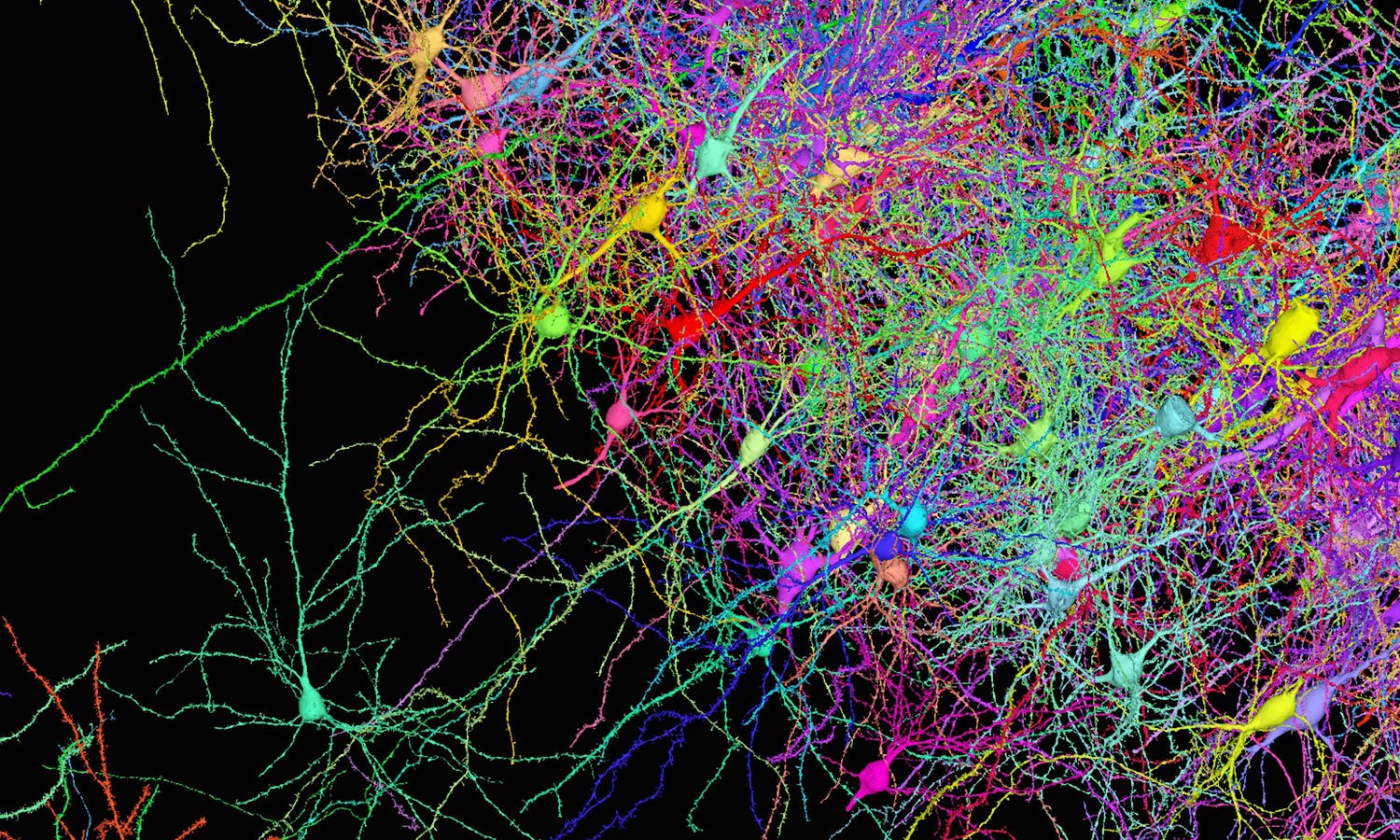
by Monique Brouillette, Contributing Writer, Quanta Magazine, Dec. 6, 2021
Last summer a group of Harvard University neuroscientists and Google engineers released the first wiring diagram of a piece of the human brain. The tissue, about the size of a pinhead, had been preserved, stained with heavy metals, cut into 5,000 slices and imaged under an electron microscope. This cubic millimeter of tissue accounts for only one-millionth of the entire human brain. Yet the vast trove of data depicting it comprises 1.4 petabytes’ worth of brightly colored microscopy images of nerve cells, blood vessels and more.
“It is like discovering a new continent,” said Jeff Lichtman of Harvard, the senior author of the paper that presented these results. He described a menagerie of puzzling features that his team had already spotted in the human tissue, including new types of cells never seen in other animals, such as neurons with axons that curl up and spiral atop each other and neurons with two axons instead of one. These findings just scratched the surface: To search the sample completely, he said, would be a task akin to driving every road in North America.
Lichtman has spent his career creating and contemplating these kinds of neural wiring diagrams, or connectomes — comprehensive maps of all the neural connections within a part or the entirety of a living brain. Because a connectome underpins all the neural activity associated with a volume of brain matter, it is a key to understanding how its host thinks, feels, moves, remembers, perceives, and much more.
Don’t expect a complete wiring diagram for a human brain anytime soon, however, because it’s technically infeasible: Lichtman points out that the zettabyte of data involved would be equivalent to a significant chunk of the entire world’s stored content today. In fact, the only species for which there is yet a comprehensive connectome is Caenorhabditis elegans, the humble roundworm.
Nevertheless, the masses of connectome data that scientists have amassed from worms, flies, mice and humans are already having a potent effect on neuroscience. And because techniques for mapping brains are getting faster, Lichtman and other researchers are excited that large-scale connectomics — mapping and comparing the brains of many individuals of a species — is finally becoming a reality.
Read more:
https://www.quantamagazine.org/new-brain-maps-can-predict-behaviors-20211206/